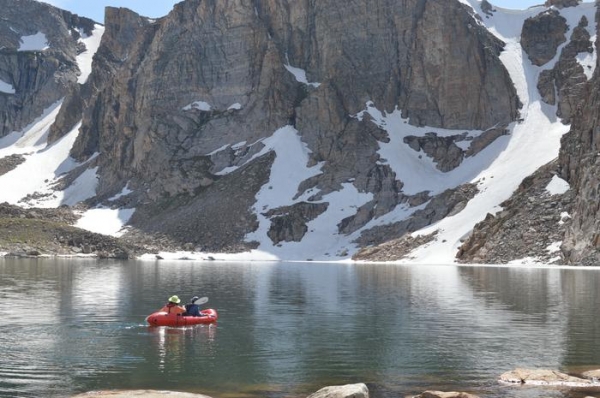The lakes in Wyoming’s Wind River Mountains historically didn’t contain fish, but stocking of trout that began in the early 1900s has created an environment in which hundreds of those lakes now have strong fish populations -- some carried on by natural reproduction for decades.
This environment also has provided a laboratory for researchers to study the ecosystem changes in the once-fishless alpine lakes, to which anglers today make long hikes to pursue cutthroat trout and relatively rare golden trout.
Previous research found that the introduction of fish in the lakes of the Wind Rivers has driven a decrease in the size of zooplankton, the small aquatic organisms on which the trout feed. Now, University of Wyoming researchers have found that the fish themselves have adapted to their environment -- “rapid evolution” that sheds further light on the introduction of invasive species.
Read more at: University of Wyoming
University of Wyoming researchers ply the waters of an alpine lake in the Stough Basin of Wyoming’s Wind River Mountains as part of their research into the impacts of trout stocking in the once-fishless lakes. Among their findings is that trout from lakes stocked decades ago in the Wind Rivers have evolved to develop more gill rakers, which are bony or cartilage structures in the gullets of fish that act as sieves to retain zooplankton and nourish the trout. (Photo Credit: Catherine Wagner)


